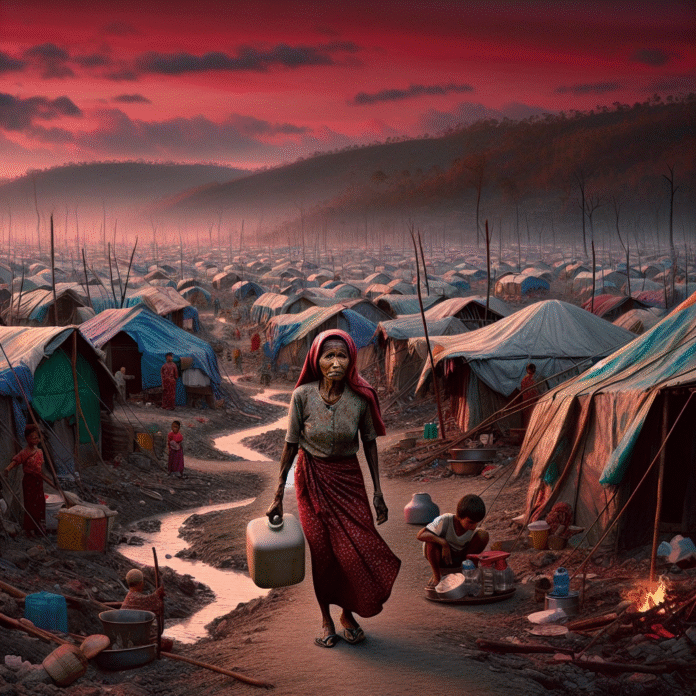Survivors of Myanmar Earthquake Endure Difficult Living Conditions
Survivors of Myanmar’s March Earthquake Continue to Live in Temporary Shelters
In the aftermath of the devastating earthquake that struck Myanmar in March, many survivors are still grappling with the consequences of the disaster. As the country struggles to recover, a significant number of those affected are forced to live in makeshift tents that offer little protection from the elements.
Ongoing Challenges for Displaced Communities
The earthquake, which registered a magnitude of 6.0, resulted in widespread destruction across several regions. Thousands of homes were damaged or completely destroyed, leaving families with no choice but to seek refuge in temporary shelters. These tents, often made from tarps and other inadequate materials, are prone to leaks, exposing residents to rain and harsh weather conditions.
Local authorities and humanitarian organizations have been working tirelessly to provide aid to those in need. However, the scale of the disaster has overwhelmed resources, making it challenging to deliver sufficient support. Many survivors report inadequate access to food, clean water, and medical care, compounding their struggles during this critical recovery period.
The Importance of Long-Term Solutions
While immediate relief efforts are essential, experts emphasize the need for long-term solutions to address the housing crisis faced by earthquake survivors. Building permanent shelters is crucial to ensuring that families can rebuild their lives in a safe and secure environment. International aid organizations are advocating for increased funding and support to facilitate the construction of durable housing.
In addition to housing, mental health support is also vital for those affected by the trauma of the earthquake. Community programs that focus on psychological well-being can help individuals cope with their experiences and foster resilience within affected communities.
Looking Ahead
As Myanmar continues to recover from this natural disaster, it is imperative that both local and international stakeholders work together to provide comprehensive support to the survivors. By prioritizing sustainable development and disaster preparedness, the country can enhance its resilience to future earthquakes and other emergencies.
The plight of the earthquake survivors serves as a reminder of the ongoing challenges faced by communities in disaster-prone regions. As the world watches, the hope is that those affected will soon find stability and a path toward rebuilding their lives.

